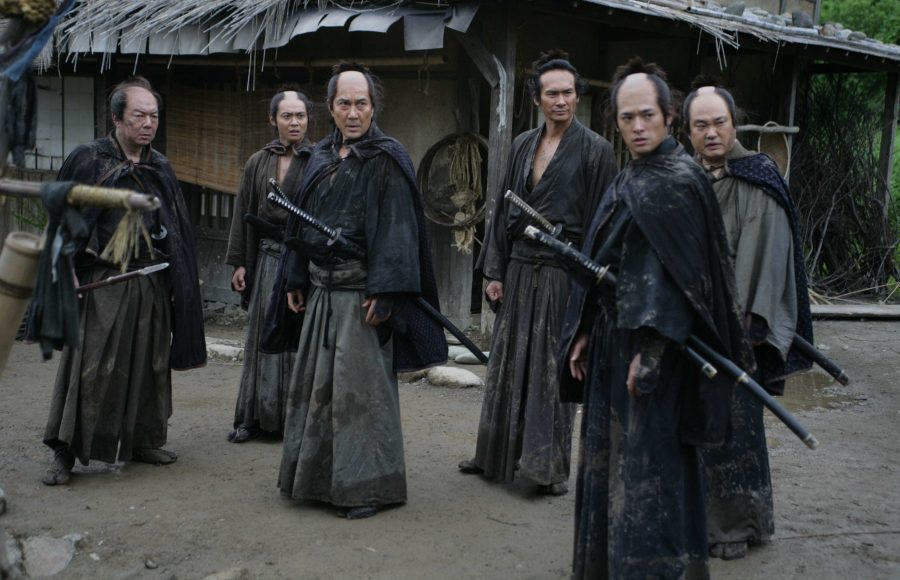Before “13 Assassins” I could honestly say that I hadn’t seen another movie that opened with a guy making filet mignon out of his own entrails. While you don’t actually see any of the action in the scene, you are forced to view the man’s pained facial expressions while the pleasant sounds of flesh being cut haunt your ears. It’s almost worse than actually seeing it happen. This act, which in fact has nothing to do with the culinary art, is called “Seppuku,” or the feudal Japanese ritual suicide by disembowelment. Seppuku was originally part of the samurai honor code “Bushido,” and was used voluntarily by samurai to die with honor, rather than be captured by the enemy and tortured. It was also used if the samurai dishonored himself or his clan in any way. So if you think that you put a lot of pressure on yourself, think again.
“13 Assassins,” directed by cult favorite Takashi Miike, is a fictional story about 13 brave warriors who are assigned to take down the sadistic lord Naritsugu Matsudaira, before he causes more chaos and suffering throughout feudal Japan. Miike, who also directed “Audition” and “Ichi the Killer,” is well known for his stylistic, yet horribly violent films. There were a couple scenes in the first half of “13 Assassins” that made me really uncomfortable to say the least, and I’m a 21st century teen who’s inured to violence because of those darn rappers and first-person shooters. It’s definitely not for the weak of heart and I wouldn’t recommend taking your kiddies to this one. That is, unless you’re either really irresponsible.
The acting and dialogue, for the most part, is above average for a samurai flick. Each actor, especially Kôji Yakusho who plays Shinzaemon Shimada, adeptly dances between the subdued nature of a samurai prepping for battle, and the rage required to slice a man’s head clean off his shoulders. It wasn’t anything I hadn’t seen before, but it did the trick.
However, Lord Naritsugu, played by Gorô Inagaki, will go down as one of the most evil antagonists ever. There are absolutely no redeeming qualities about his character; he takes pleasure from chaos and the torture and murder of innocent people. He’s bored and it’s all a game to him which comes through in Inagaki’s convincing performance. In return, I was able to rally behind the 13 assassins in their quest to take Lord Naritsugu down to Japantown.
The second half of the movie is a battle. That’s not an exaggeration. If you’re not a fan of relentless swordplay, then “13 Assassins” might not be the movie for you. Needless to say, the final confrontation where the 13 heroes stand up against Lord Naritsugu and 200 of his men is epic. Through a mix of guerilla tactics, trickery, and pure combat, Shinzaemon and his merry band of assassins take on a considerably larger force, which is a circumstance that audiences always love. The “underdog” scenario has been a tried and true story structure ever since some hairy guy started painting pictures of himself going up against a horde of wild boars on his cave wall. It may be a simple premise, but it gets me every time.
If you’re itching for some samurai on samurai action, “13 Assassins” is more than enough to satisfy your needs. It has a pretty simple premise, solid dialogue (despite being a little unbelievable at times), and paints a picture of the samurai at the tail end of the 1800s before the collapse of the Shogunate system of rule and the birth of modern Japan.
Miike has once again proven that he is a director of merit and his films deserve better than just a few showings at local indie theaters, despite their often unsavory content.
Written by Hank Brown. This originally appeared in the June 2011 issue.



